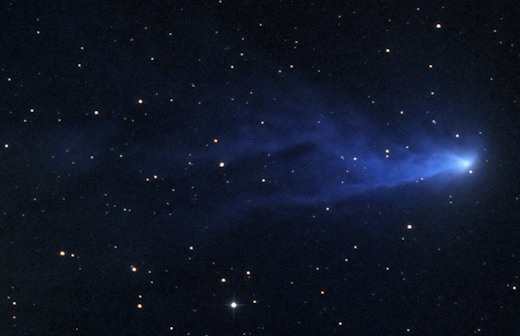
Throughout Autumn 2017, Comet C/2016 R2 PanSTARRS has been watched closely as it showed some bizarre behavior. The icy object located beyond the orbit or Mars boasts a chaotic electric Blue tail.
Why is the tail blue? This is the identifier to scientists that the comet is spewing ionized carbon monoxide (CO+). Blue being the tell-tale color.
The comet is very CO rich. This has been confirmed by a study last month by astronomers K. Wierzchos and M. Womack of the University of South Florida used the Arizona Radio Observatory’s 10-m Submillimeter Telescope at Mount Graham. They detected very high levels of CO escaping from the comet’s core.
Carbon monoxide is very volatile and changes from a solid to a gas in very low temperatures. Therefore, the minute any sunlight reaches any deposits of CO from the comet, it turns in to a gas. This is what has caused the blue tail on Comet C/2016 R2 PanSTARRS.
The comet was discovered on 7 September 2016 by the University of Hawaii’s PanSTARRS telescope. It has an estimated orbital period of 20800 years and a highly eccentric orbit tilted at an angle of 58.2° to the plain of the Solar System.
The comet already past closest approach to Earth on 23 at a Distance of 2.05AU from the Earth. However the comet is yet to reach closest approach to the Sun. This will occur in May 2018 when it will reach 2.6AU from the Sun. Imaged above on 06 January 2018 by Michael Jäger, the intricate detail and electric blue tail can be clearly seen. A brilliant animation of the comet comprising of 30 shots taken over a 90 minute period was posted to Spaceweather.com. This intriguing comet is certainly one to watch for imagers…

Leave a Reply